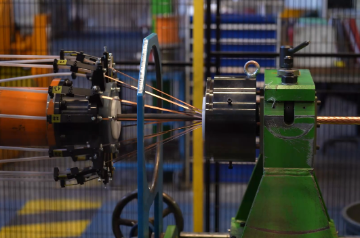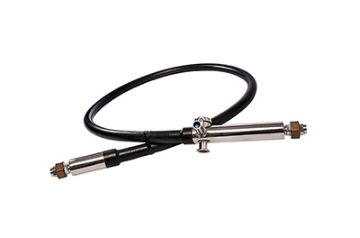- Marchés
- Produits
- Services
- News
- Outils et Ressources
- A propos de Nexans
- Recherche
- Contactez-nous
- Comparer
- Se connecter
A la Une
-
Bâtiment12 nov. 2025
Installations électriques : comprendre la réaction et la résistance au feu des câbles
Cet article explique les deux performances essentielles des câbles en sécurité incendie : la réaction au feu, qui décrit la manière dont un câble se comporte lorsqu’il est exposé aux flammes, et la résistance au feu, qui garantit la continuité électrique des systèmes de sécurité en conditions extrêmes.
Vous y découvrirez comment un incendie se développe, pourquoi les fumées représentent le danger principal, le rôle des câbles LFH dans la limitation de la propagation, ainsi que les clés pour reconnaître les câbles performants grâce aux Euroclasses du RPC. L’article aborde également les câbles résistants au feu, leurs usages (ECS, CMSI, éclairage de sécurité…), leurs spécificités techniques et leur importance cruciale dans les ERP et IGH. -
Innovation6 nov. 2025
SupraMarine, un projet innovant de raccordement de parcs éoliens en mer au continent
Air Liquide, CentraleSupélec, ITP Interpipe, Nexans et RTE ont formé un consortium en vue de créer un démonstrateur de transport d’électricité par supraconductivité à courant alternatif haute tension (CA HT)
-
Bâtiment2 nov. 2025
Evolution Historique du Règlement sur les Produits de Construction (RPC)
Du Traité de Rome à la réglementation produits de construction actuelle, l’Europe a progressivement établi un cadre commun garantissant la sécurité incendie des bâtiments.
Découvrez comment les grandes étapes – de la directive de 1988 à l’application du CPR aux câbles en 2017 – ont façonné les normes qui protègent les personnes et les infrastructures à travers l’Union européenne. -
Réseaux d'énergie - Distribution23 oct. 2025
Nexans vous donne rendez-vous à Data Centre World Paris 2025
Venez nous rencontrer stand B60 au cœur du salon, pour démontrer comment les câbles électriques ne sont plus de simples composants, mais de véritables actifs stratégiques pour assurer fiabilité, sécurité et durabilité.
-
Bâtiment22 oct. 2025
Comment les câbles électriques aident-ils à lutter contre les incendies ?
Les câbles électriques jouent un rôle essentiel dans la lutte contre les incendies. Grâce à leurs propriétés techniques — limitation de la propagation du feu, réduction des fumées et maintien de l’alimentation des systèmes de sécurité — ils contribuent directement à la protection des personnes et des bâtiments. Les nouvelles exigences du règlement français de mai 2024 imposent désormais l’usage de câbles certifiés Cca-s2,d2,a2 dans les ERP et IGH. Avec la gamme Nexans FR-N1X6G3 PROTECT, Nexans répond pleinement à ces enjeux en alliant sécurité, performance et conformité aux normes européennes.
Nos sites web
Sélectionnez votre pays pour trouver nos produits et solutions
-
Afrique
- Afrique
- Côte d'Ivoire
- Ghana
- Maroc
- Zone Afrique du Nord
- Amériques
- Asie
- Europe
- Océanie











